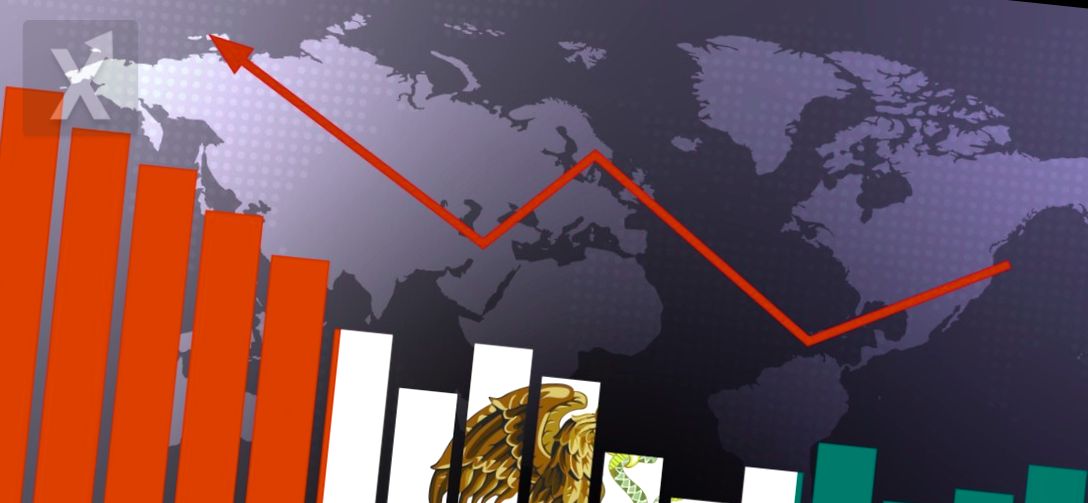Economic Dangers on the Horizon: Treasury Projections for 2025-2030

The Ministry of Finance and Public Credit has identified four potential events that, if realized, would pose a considerable risk to the country's economy over the next five years (2025-2030). For this period, the federal government forecasts that economic growth will be between 2% and 3%, while inflation is expected to remain between 2% and 4%, in line with the objectives of the Bank of Mexico (Banxico). Additionally, a moderate deficit of around 0.5% is anticipated, with the price of oil set at $60.7 per barrel and a 2% growth in the Gross Domestic Product (GDP) of the United States, according to the General Criteria for Economic Policy.
Among the short-term risks identified by the Treasury are: - Economic and geopolitical tensions that could disrupt global supply chains and create a “lower growth outlook worldwide,” negatively impacting Mexico's production and exports. - Adverse weather conditions both globally and within the country, resulting from rising greenhouse gas emissions, which could lead to shortages of agricultural products and a reduction in available capital in the country. - New pandemics that might arise, complicating international trade and the development of the services sector, which would affect inflation and tighten monetary policies both locally and internationally. - Fiscal deterioration in nations with high debt levels, putting global economic growth at risk and generating volatility in financial assets. All these factors would exert inflationary pressures on Mexico. The Treasury emphasizes in the General Criteria the potential impact these variables could have on macroeconomic projections.
In the long term, population aging and natural disasters are considerations that must be taken into account. To mitigate the effects of these situations, the government has fiscal buffers, such as the Budgetary Revenue Stabilization Fund, which currently holds 51 billion pesos. Additionally, there is the Revenue Stabilization Fund for Federal Entities and the Mexican Petroleum Fund, with 13 billion and 24 billion pesos respectively. There's also a scheme for oil hedges that protects government revenues against drops in hydrocarbon prices, as well as a flexible credit line with the International Monetary Fund (IMF) for $36 billion and a swap agreement with the U.S. Treasury for $9 billion. As of November 1 of this year, international reserves reached a total of $226 billion, providing exchange rate flexibility to face external shocks. Furthermore, there's a strategy for diversifying public debt to cushion against potential increases in debt servicing costs. Mexico's public debt is mostly in local currency and at fixed rates, allowing for better management of exchange rate risks, interest rates, and refinancing debt. In addition, four catastrophe bonds have been acquired, active between 2024 and 2028, totaling $595 million, designed to protect against losses from earthquakes and hurricanes.
Finally, the Treasury has identified two key long-term risks. Although the Mexican population is “primarily young,” this will change over time as there is a gradual aging of the population. It’s estimated that by 2050, the elderly group will comprise 24.1% of the population, while children and youth will represent 12.8% and 22.3%, respectively. This will lead to increased demand for medical services and a greater financial burden due to rising pension payments, both contributory and non-contributory. In the short term, the Treasury anticipates pressures from payments of the traditional pay-as-you-go pension system and has planned to allocate 483.428 billion pesos next year to the Pension for Well-Being, with a fiscal cost that could rise by less than 0.5% of GDP between 2024 and 2030. These estimates may vary depending on the actual growth of pensions, the minimum retirement age, developments in longevity, and possible changes in pension policies. The Treasury is also equipped to estimate losses and potential economic damages caused by natural disasters, projected between 12 billion and 39 billion pesos. Overall, the Mexican government has a series of fiscal mechanisms to mitigate the risks that could impact public finances.
In an economic environment filled with challenges, it's essential that risk management is integrated into economic policy. Revenue diversification and long-term planning are key to maintaining financial stability. Additionally, investing in infrastructure and education can help mitigate the negative impacts of the identified risks, ensuring sustainable growth that benefits all segments of the population.






